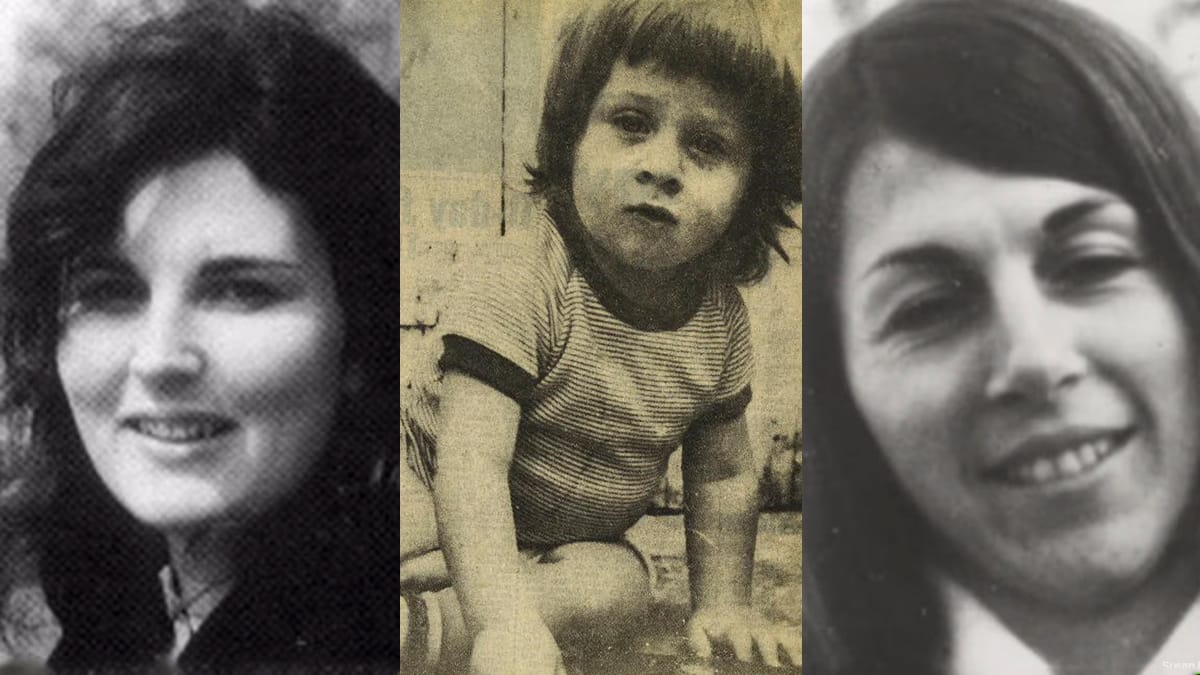Table of Contents
After nearly 50 years, one of Victoria’s longest-running and most notorious murder cases is a step closer to being solved, with the arrest of a suspect in Rome.
In late 1976, two high-school friends from the country town of Benalla rented a tiny house on Easey Street, in the inner Melbourne suburb of Collingwood. They were Suzanne Armstrong, a 28-year-old single mother of a 16-month-old boy, and Susan Bartlett, a 27-year-old schoolteacher at the nearby Collingwood Education Centre.
A few months later, on a summer day in January 1977, neighbours began to notice something amiss. First, a German shepherd puppy belonging to the two women was found wandering the area. Then they began to hear the baby boy, Gregory, whimpering and crying. After three days, the worried neighbours entered the house to investigate – and found a scene of horror.
Little Gregory was in his cot, dehydrated but unharmed. But his mother and her friend had been stabbed to death in a frenzied attack, and one of them raped afterward. Suzanne, Gregory’s mother, was found on her bed. Susan Bartlett’s body was found in the hallway near the front door, next to Suzanne Armstrong’s bedroom. It is believed she was murdered when she went to try and help her friend. Armstrong was stabbed 29 times, Bartlett 55 times.

There were no signs of forced entry, although a footprint on the front window sill indicated a possible entry point. There was evidence the killer cleaned up in the bathroom after the murders. The back door and a gate into a rear laneway were both left open, suggesting the killer’s escape route. No murder weapon was found.
A week after the crime, police in the Collingwood area allegedly found a knife and sheath with traces of blood in the possession of 17-year-old Perry Kouroumblis. Kouroumblis told detectives he had found the knife on the railroad tracks in Collingwood about 90 minutes after the two women were last seen alive. At the coronial inquest into the murders, some months later, Kouroumblis could not be located to testify.
And there the trail went cold for the next half-century. No one was ever arrested.
With remarkable foresight, police in 1977 collected and preserved evidence that included DNA. It wasn’t until 1984 that British geneticist Sir Alec Jeffreys realised that DNA left a clear ‘fingerprint’ that could be uniquely linked to individuals. By the late 1990s, Victorian detectives were using this to eliminate dozens of suspects in the Easey Street murders.
Then, in 2017, cold-case detectives asked Perry Kouroumblis to provide a sample. He allegedly agreed – but then fled Australia for Greece. As Greece has a 20-year statute of limitations for extradition, Victoria Police were left unable to compel his return.
But they weren’t completely helpless. Kouroumblis was put on an international watch list. More importantly, a DNA sample from a relative established a match with other forensic evidence from the crime.
Last week, Kouroumblis was arrested by Italian police at Rome’s Leonardo da Vinci Rome Fiumicino Airport. It remains unclear why Kouroumblis left Greece to travel to Italy […]
The 65-year-old is in custody in Rome awaiting an extradition hearing that could see him returned to Australia. No charges have been laid, and if they are, they will need to be proven in an Australian court.
When he originally fled the country, Kouroumblis allegedly told friends he was taking a ‘short holiday’.
But a long-time associate said Kouroumblis told him in 2017 that he was leaving the country to take care of his ailing mother, who was living in Greece at the time.
“He moved because his mother had moved there and she was alone. He moved to help their mother,” Arjan Tuli said […]
Tuli said Kouroumblis, who worked as a welder and never married, had not returned to Australia in the past six years as far as he knew.
Tuli said he was shocked at the accusations made against Kouroumblis, who he called a “normal person”.
The news of his arrest will no doubt be some final comfort for the relatives of the murdered, none more so than Gregory Armstrong, who was adopted and raised in Queensland by his mother’s younger sister. His adoptive mother has been a continual advocate in the media for solving the crime.
The arrest also closes off what was originally thought to be a link to the murder of another Melbourne woman.
In 1975, Julie Ann Garciacelay vanished from her flat in Canning Street, North Melbourne. The prime suspect in that case, a Melbourne journalist, was asleep in the house next door in Easey Street at the time of the 1977 double murder.









